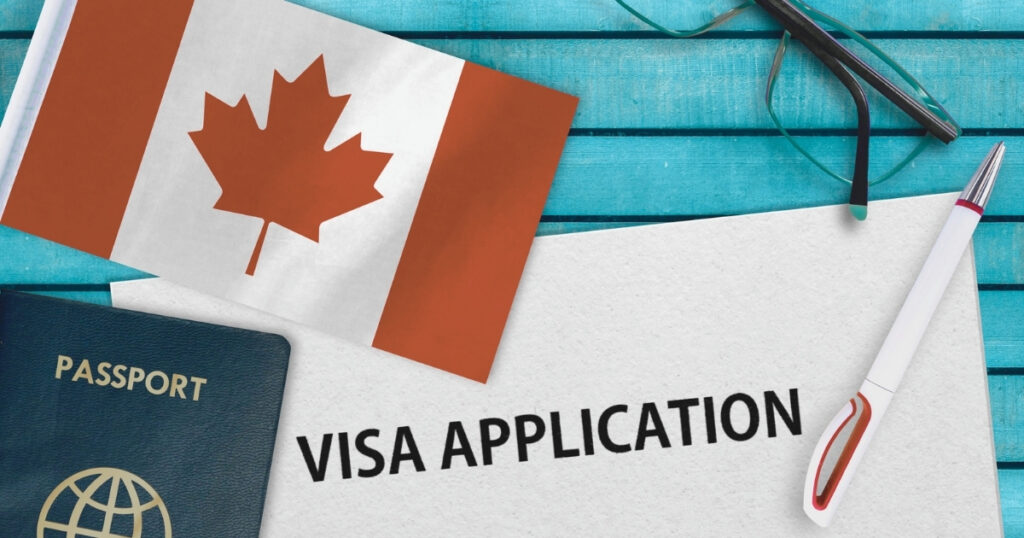Navigating the world of international work permits can be overwhelming, especially for digital nomads looking to experience Canada’s diverse landscapes while maintaining their remote careers. Understanding the ins and outs of a Canada work permit visa is essential for a smooth transition to working in the Great White North.
Canada offers several pathways for remote workers and digital professionals seeking to blend work with exploration. From temporary work permits to more permanent solutions, the Canadian immigration system provides options tailored to various professional circumstances and goals.
In this comprehensive guide, Nomada breaks down everything digital nomads need to know about obtaining a Canada work permit visa, from eligibility requirements to application processes, helping you transform your Canadian work dreams into reality.
Understanding Canada work permit visa types

Canada’s immigration system offers various work permit options designed to accommodate different professional situations. For digital nomads, understanding these distinctions is crucial for selecting the right pathway.
1. Employer-specific vs. open work permits
Employer-specific work permits (formerly called closed work permits) are tied to a specific employer in Canada. These permits specify the employer you can work for, the location, and sometimes even the duration and position. Most traditional work permits fall into this category and require a valid job offer from a Canadian employer.
Open work permits, on the other hand, offer significantly more flexibility for digital nomads. These permits allow you to work for any employer in Canada (with some exceptions) without being tied to a specific job. They’re ideal for those with varying clients or projects, though they typically have stricter eligibility requirements.
🌟 Pro tip: if you’re pursuing an open work permit, maintain comprehensive documentation of your remote work history, client portfolio, and income stability to strengthen your application and demonstrate your legitimate digital nomad status.
2. Temporary Foreign Worker Program (TFWP)
The Temporary Foreign Worker Program is designed for Canadian employers to hire foreign nationals when qualified Canadian citizens or permanent residents aren’t available. For digital nomads, this pathway typically requires a Labor Market Impact Assessment (LMIA), where your prospective employer must prove that hiring you won’t negatively impact the Canadian labor market.
The TFWP encompasses several streams, including high-wage and low-wage positions, with different requirements for each. The program focuses primarily on filling specific labor shortages rather than accommodating location-independent professionals, making it less suitable for typical digital nomad arrangements.
💡 Did you know? Canada introduced the Global Talent Stream under the TFWP, which offers expedited processing times (often just two weeks) for highly skilled professionals in tech and innovation sectors—fields where many digital nomads work.
Key pathways for digital nomads seeking Canada work permit visas

The ideal work permit pathway for digital nomads depends on your specific circumstances, skills, and long-term goals in Canada. Several options cater particularly well to the digital nomad lifestyle.
1. International Experience Canada (IEC)
The International Experience Canada program represents one of the most accessible pathways for young digital nomads. Available to citizens of countries with bilateral youth mobility agreements with Canada, the IEC offers work permits to individuals aged 18-35 (though age limits vary by country).
The program includes three categories: Working Holiday, Young Professionals, and International Co-op. The Working Holiday category is particularly valuable for digital nomads, providing an open work permit that allows you to work for multiple employers or clients while traveling throughout Canada. Eligibility depends on your citizenship, with countries like Australia, France, Germany, and the UK participating in the program.
2. Global skills strategy and specialized programs
Canada’s Global Skills Strategy caters specifically to highly skilled global talent, including many digital professionals. This pathway offers expedited processing for eligible workers in specialized fields, particularly those in technology, engineering, and innovation sectors.
The strategy includes the Global Talent Stream, which provides two-week processing times for designated high-demand occupations and employers seeking unique and specialized talent. For digital nomads with sought-after skills in these areas, this program offers one of the fastest routes to legal work status in Canada.
🌟 Pro tip: leverage professional designation bodies or industry associations related to your field when applying through specialized pathways. Endorsements from recognized Canadian professional organizations can significantly strengthen your application.
3. Self-employed pathways
For entrepreneurial digital nomads, Canada offers pathways designed specifically for self-employed individuals. While more challenging to qualify for than some other options, these pathways provide immigration routes for those who operate their own businesses.
To qualify for the federal Self-employed Persons Program, you must demonstrate relevant experience in cultural activities, athletics, or farm management, as well as your ability and intention to create your own employment in Canada. Several provinces also offer entrepreneurial immigration streams through their Provincial Nominee Programs, which may be more accessible for digital professionals looking to establish businesses.
Essential requirements for a successful Canada work permit visa application

Preparing a successful work permit application requires attention to detail and thorough documentation. Understanding the core requirements will significantly improve your chances of approval.
Documentation and eligibility verification
Every Canada work permit visa application requires comprehensive documentation to establish your eligibility. The exact requirements vary based on the specific permit type, but generally include:
- A valid passport
- Proof of financial stability to support yourself in Canada
- A clear criminal record check
- Medical examination results when required
- Evidence of ties to your home country to demonstrate you’ll leave Canada when your permit expires
- Proof of relevant qualifications and work experience
- Application fees (typically CAD$155)
For digital nomads, additional documentation proving your remote work arrangement, client contracts, income stability, and business legitimacy may strengthen your application. Immigration officers need assurance that you have sustainable work arrangements that comply with Canadian immigration policies.
Maintaining reliable internet connectivity is crucial for digital nomads working from Canada. A travel-focused eSIM solution from Holafly provides immediate data coverage upon arrival, ensuring you remain connected to clients and work platforms without interruption—essential for demonstrating employment stability during your stay.
Application process and timeline considerations
The application process for a Canada work permit visa involves several steps that require careful planning and timing:
- Determine eligibility and the appropriate work permit category
- Gather all required documentation
- Complete and submit the application online or on paper
- Pay application fees
- Attend biometrics appointment if required
- Wait for processing
- Respond promptly to any requests for additional information
Key considerations for digital nomads planning their Canadian work experience:
- Begin your application at least 3-4 months before intended travel
- Account for processing times that vary by country of residence
- Consider premium processing options when available for your permit category
- Prepare for potential interview questions about remote work arrangements
- Maintain valid status throughout the application process
🌟 Pro tip: when applying for work permits that require proof of employment, create a comprehensive portfolio showcasing your digital nomad career, including client testimonials, long-term contracts, and stable income history. This proactive approach addresses common concerns immigration officers have about remote work arrangements.
Final thoughts on obtaining a Canada work permit visa as a digital nomad
Securing a Canada work permit visa as a digital nomad involves navigating complex immigration pathways designed primarily for traditional employment. While the system doesn’t yet have a dedicated visa specifically for location-independent professionals, several viable options exist for those willing to understand the nuances of Canadian immigration.
Success requires strategic planning, thorough documentation, and sometimes creative approaches to demonstrating how your digital nomad career fits within existing immigration frameworks. The effort is worthwhile, as Canada offers digital nomads an exceptional blend of stunning natural landscapes, world-class cities with excellent infrastructure, and a quality of life consistently ranked among the world’s best.
As remote work continues to redefine global employment patterns, Canada’s immigration policies may evolve to better accommodate digital nomads. Until then, leveraging existing pathways with a clear understanding of their requirements offers the best route to working legally in this northern paradise.
For comprehensive support navigating Canada’s immigration system, explore Nomada’s resources on digital nomad visas to understand your options and requirements for legally working while experiencing Canada’s beauty.
Your Canadian adventure awaits with Nomada as your guide to location independence 👉
Frequently asked questions about Canada work permit visas
No, working remotely while in Canada on a visitor visa (even for foreign clients) generally violates visa conditions. You need proper work authorization through a work permit that aligns with your specific work arrangement.
Processing times vary significantly based on your country of residence, the type of work permit, and current application volumes. Standard processing typically takes 4-16 weeks, while expedited streams like the Global Talent Stream can process applications in just two weeks.
Most work permits require a Canadian job offer, but exceptions exist. Programs like the Working Holiday permit under IEC and certain Provincial Nominee Programs offer pathways without requiring pre-arranged employment.
Yes, many work permits create pathways to permanent residency, particularly through the Canadian Experience Class under Express Entry. Working legally in Canada can help you accumulate valuable points in the Comprehensive Ranking System.
You must either leave Canada, extend your work permit, or apply for a different immigration status before your current permit expires. Staying beyond your authorized period can result in removal and future inadmissibility.




